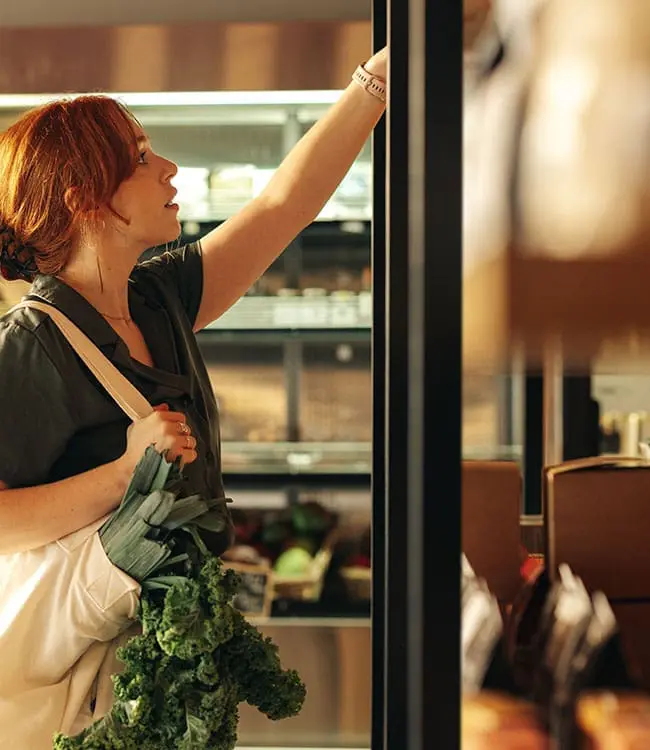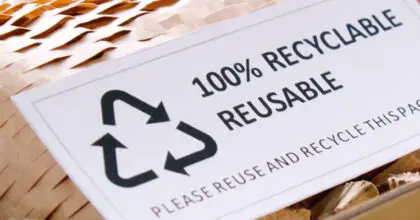As Easter swiftly approaches, many consumers will be queuing up to purchase sugar and confectionary items to help them mark the occasion. But as they do so, they may also be considering the elaborate wrapping and decorations that accompany their purchases. Although attractive, the excess of some of the wrapping around Easter treats has increasingly fuelled consumer concern about the excessive waste caused by the packaging.
The topic has been the centre of much media scrutiny, prompting brands to address the issue, finding other creative solutions to the over-wrap of Easter treats. Sainsbury’s, for example, claimed its position as the first UK retailer to offer a dedicated recycling facility in store for all Easter egg packaging, as part of its drive to cut the amount of household waste still going into landfill. The in-store recycling bins accepts all elements of the discarded packaging – plastic, film, card, foil and ribbon.
So strong is the impetus to make Easter a more eco-friendly holiday that the percentage of products launched with a claim of “environmentally friendly product” or “environmentally friendly packaging” in Europe increased from 9% of Easter sugar and chocolate confectionary in 2012 to 35% in 2014.
As Easter approaches and consumer thoughts again turn to the mountain of packaging they will inevitably acquire, we look at two innovative ways that brands are tackling the problem head on..
Eat the package
One solution being explored by various brands is to simply eat the decorations destined for the rubbish pile. For example, making decorations delicious in Germany, edible “grass” made from starch based “paper”, food colouring and sweeteners, replaces the paper or plastic “grass” in Easter baskets. Not the first market to explore the idea, edible “grass” has also appeared in the US and Canada, amongst others.
It’s not only decorations that can be popular with consumers, there is also edible wrapping for confectionary and although this concept is not new, it is rare. Rice paper overwrap is used in a number of markets, primarily in Asia, in confectionary products and edible paper has been used as an element in cake decorating kits in Europe. However, the concept has the potential to be used more broadly in the Easter confectionery market as a way or reducing packaging waste.
Any form of measure taken to reduce waste in packaging will be welcomed considering the extent to which consumers consider recyclable packaging to be important. In the UK, for example, over half of consumers expect all food packaging to be recyclable and over two fifths believe brands are not doing enough to reduce the amount of packaging they use.
[row]
Küchle’s Edible Easter Gras, launched in Germany in March 2015, is made from edible paper and sweeteners.
[/row]
[row]
Galerie’s Edible Easter Grass launched in the US, March 2013.
[/row]
Plant the package
Confectionary manufacturers could consider another tactic to cut back on the amount of waste generated at Easter by offering compostable solutions. A compostable Easter basket, for example, could be used as the vessel for treats wrapped in edible paper and nestled in edible “grass.” This again could be popular with consumers. In the UK, for example, composting is a habit undertaken all of the time or some of the time by about half of consumers.
A recent project from Kickstarter, in which a California-based company is developing a compostable coffee cup impregnated with seeds from local trees and plants could provide inspiration. A compostable Easter basket could be planted as soon as the holiday is over in the spring and yield flowers or fruits that could be given as Halloween treats in the fall.
Composting at least part of the Easter packaging has already been seen in some markets. A 2014 product from Nestlé South Africa has a recyclable container and a compostable package for the Easter egg and bars, but such packaging is still unusual across markets.
Given the efforts to cut back on Easter packaging waste, compostable packaging – as well as edible packing – presents alternatives that should resonate with consumers. Using Easter packaging as a “teachable moment” for children may also appeal to parents, as seen in a number of magazine articles, blogs and Pinterest pages devoted to “zero waste Easter.”
[row]
Nestlé Toffee Crisp Milk Chocolate Egg with Toffee Crisp Bars and a Toffee Crisp Mug was launched in the South Africa, April 2014. The product retails in an eco friendly recyclable pack, made from materials sourced from managed forestry. The pack window is also compostable.
[/row]
[row]
Seed and Bean’s Luomu Tumma Suklaalevy Merisuola (Organic Cornish Sea Salt Extra Dark Chocolate) was launched in Finland, September 2014. The product’s packaging’s inner foil wrappers are made from cellulose and are home compostable. The company has received a 100% ethical accreditation from The Ethical Company Organisation.
[/row]
[row]
Sweet Justice’s Trade Aid Sri Lankan Spice Fair Trade Organic Chocolate was launched in New Zealand, October 2014. The product features ingredients grown by small-scale farmers in a 100g compostable pack that has been sustainably packaged.
[/row]
Overall, edible packaging for Easter confectionery is an area that should be investigated as concern about wasteful, non-sustainable containers is especially pronounced during this holiday period. There is therefore room for more experimentation and innovation around edible packaging, both as a decorative element and as a container for other types of confectionery. Innovation in compostable packaging for Easter confectionery is also not yet very developed, but given the interest in making Easter more “sustainable”, packaging and containers that can be composted are likely to be popular with consumers.
Mintel’s Director of Insight, Food and Drink, Marcia has been with Mintel since 2000. Her expertise center on a number of areas in confectionery and snacks. She also has a deep understanding of consumer demographics, having previously served as an associate editor for American Demographics magazine. Before joining Mintel, Marcia headed her own consulting company which focused on consumer behavior and product innovation in a wide range of industries.







































